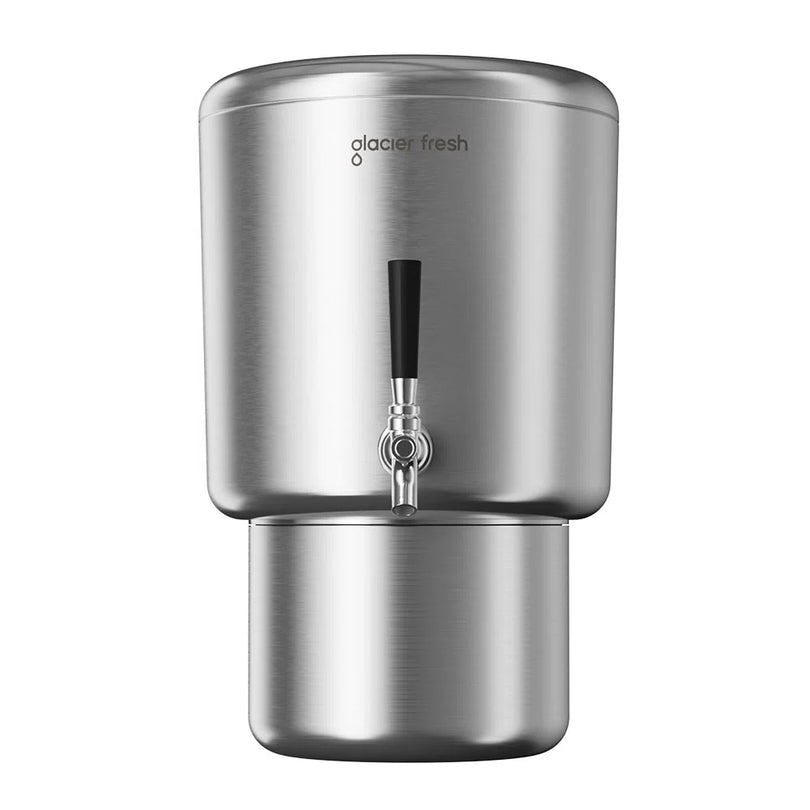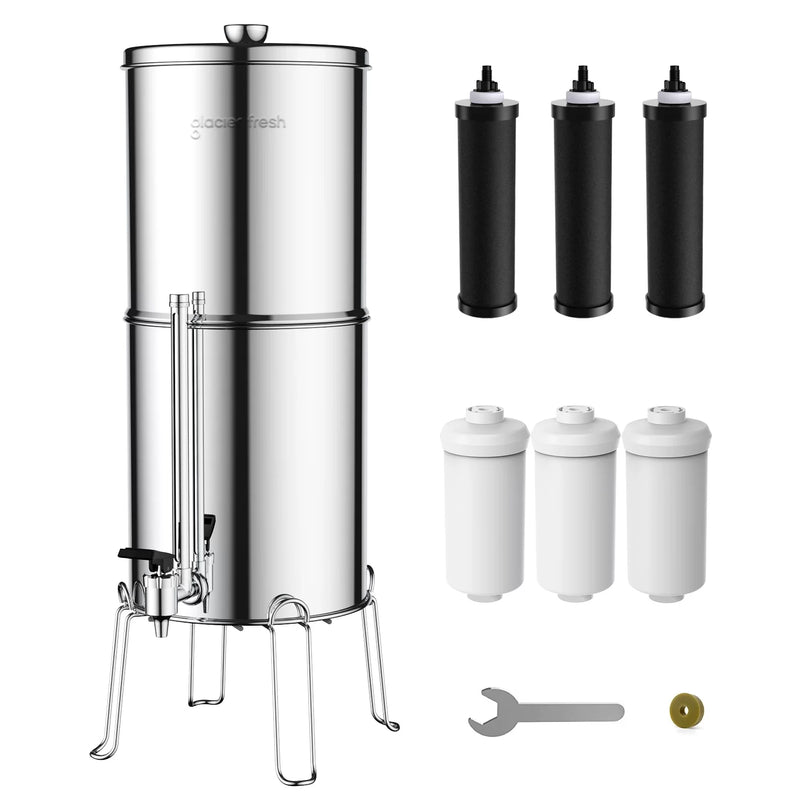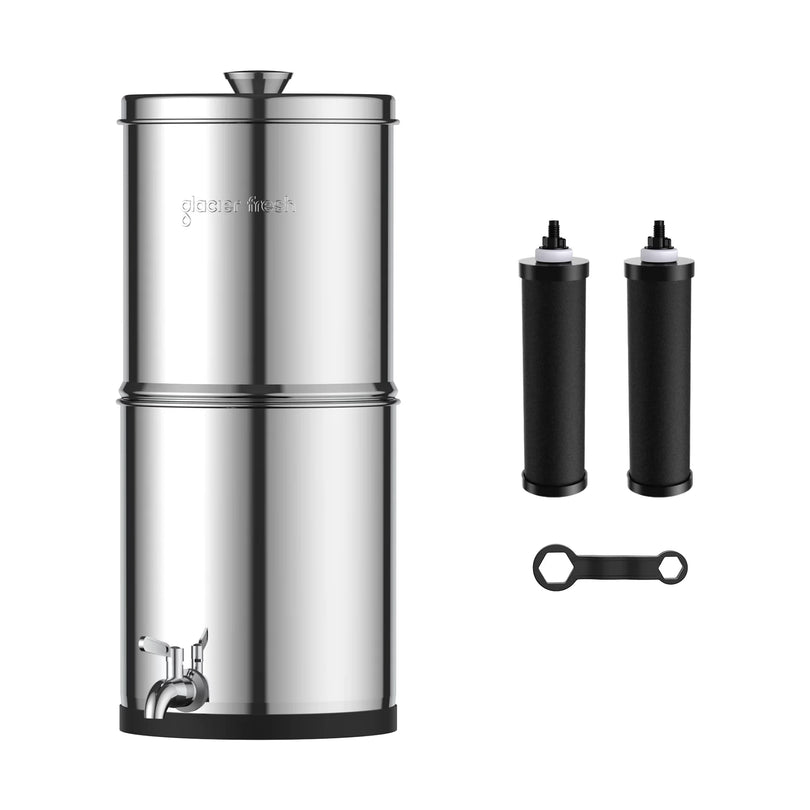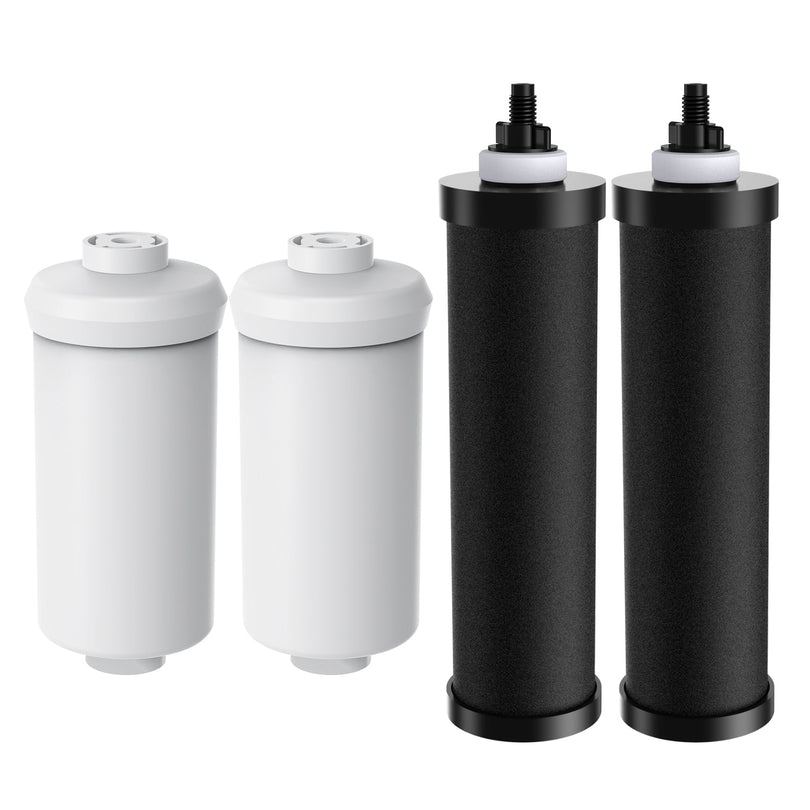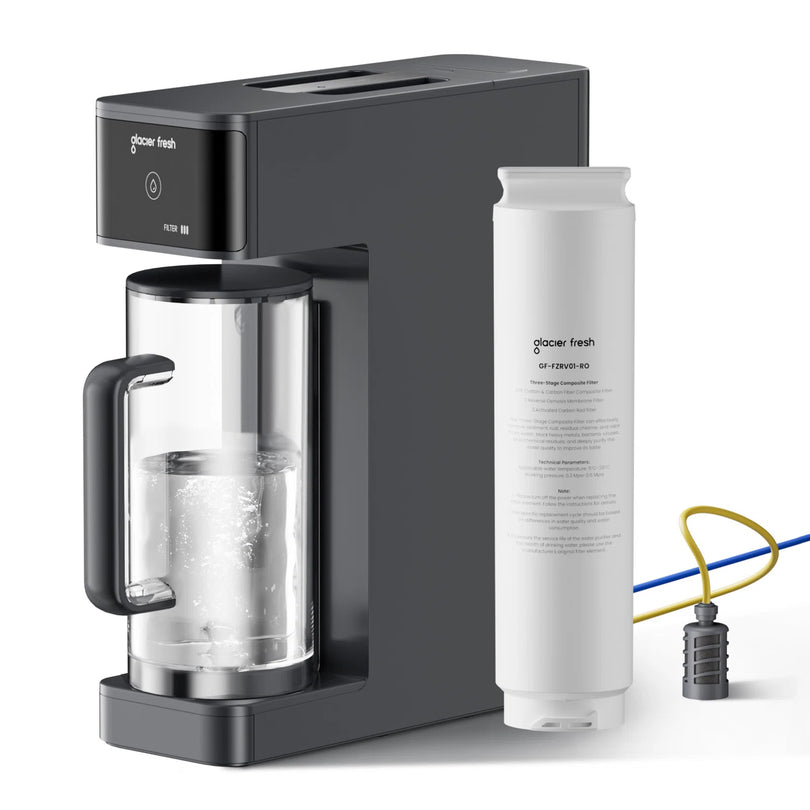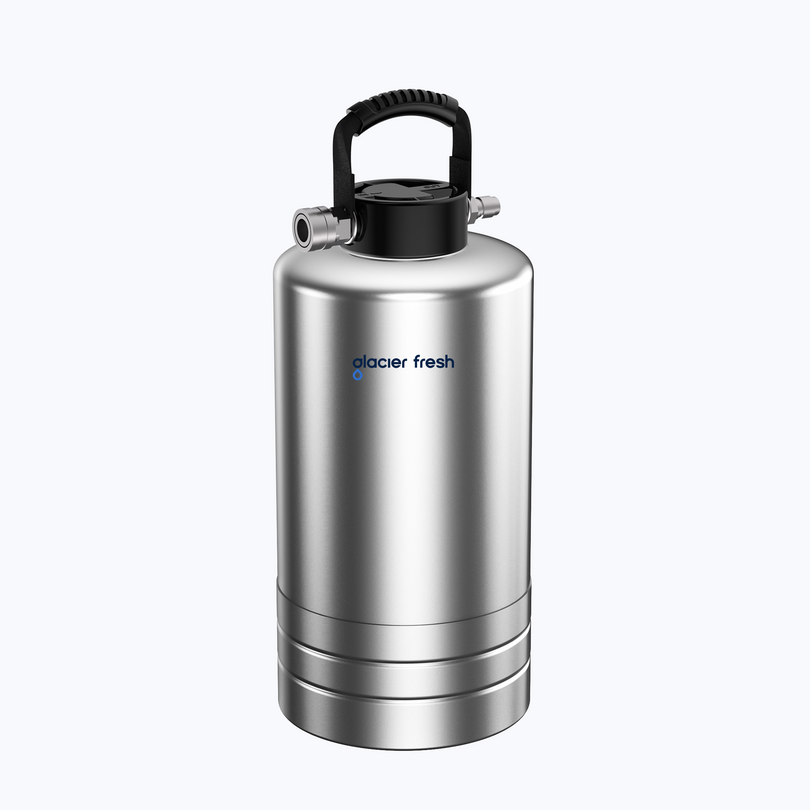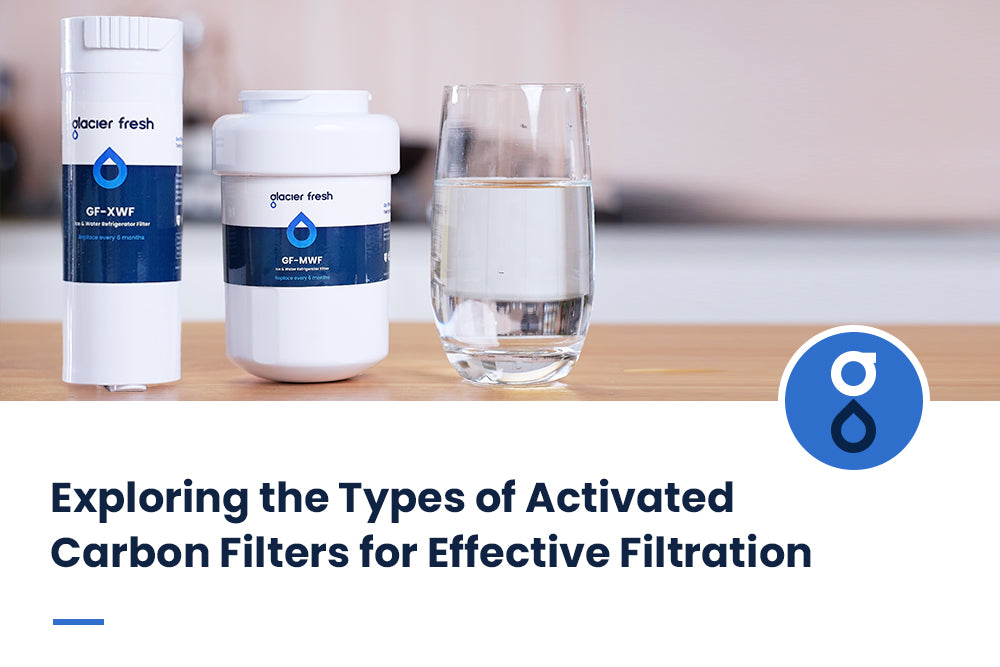Table of Contents:
What you need to know about PFAS ---forever chemicals
Sources of PFAS in tap water
How are PFAS regulated in drinking water
How do I know if I have PFAS in my drinking water
How can I get rid of PFAS in my water
Conclusion
You may wonder if your home's tap water contains PFAS, commonly known as "forever chemicals. These chemicals are of particular concern due to their potential health effects and long-term environmental presence. In this article, we'll discuss what you need to know about PFAS, the sources of PFAS in tap water, how it's regulated in drinking water, and how to get rid of it from your supply. We'll also answer some commonly asked questions about PFAS contamination. So keep reading to learn more so you can make informed decisions regarding the safety of your drinking water.
What you need to know about PFAS---Forever Chemicals

PFAS, also known as "forever chemicals," is a group of artificial chemicals that have been widely used in products since the 1940s. They are persistent in the environment and resistant to breakdown. Testing for PFAS is increasingly being done due to their potential adverse health effects from long-term exposure and their environmental impact.
There are many sources of PFAS contamination, including industrial sites, military firefighting training sites, wastewater treatment plants, landfills, and consumer products like non-stick cookware and stain repellents. Water filtration is one way to reduce the risk of exposure by removing or lowering levels of PFAS present in drinking water.
Everyone needs to stay informed on this issue to decide how best to protect themselves and their families from the risks associated with PFAS exposure. Understanding the sources of PFAS in tap water will help us further identify ways to combat this growing problem.
Sources of PFAS in tap water
PFAS can enter our water supply through various routes. And the PFAS contamination interactive map shows the clear distribution of PFAS in the U.S..
Industrial sites that manufacture, use, or dispose of PFAS-containing products can release these chemicals into the environment. Wastewater treatment plants that receive industrial or household wastewater can also contaminate our water supplies. Landfills that accept PFAS-containing waste can also be a source of contamination. Firefighting foam containing PFAS is often used in training exercises and emergencies, such as fires at airports or military bases.
When used, these foams can contaminate nearby streams, rivers, and groundwater, contaminating our drinking water. Moreover, consumer products such as food packaging, dental floss, and household cleaning products can also be a source of PFAS in our tap water. PFAS can leach out of these products and enter our water supplies through wastewater.
One significant concern with PFAS is bioaccumulation. These chemicals do not break down quickly and can accumulate in the environment and our bodies over time. As a result, PFAS may pose a potential health risk as they slowly get into our bodies, leading to adverse health effects such as thyroid disease, liver damage, and testicular cancer.
To monitor PFAS levels in tap water, testing is essential. Tap water samples can be taken and analyzed in specialized laboratories to detect PFAS concentrations. Water utilities must monitor the levels of PFAS in drinking water sources to determine whether the stories are within safe exposure levels.
Moreover, the health department recommends regularly monitoring the PFAS concentration in tap water to ensure that it is healthy and safe for consumption.
How are PFAS regulated in drinking water?
The Environmental Protection Agency (EPA) regulates PFAS in drinking water through the Safe Drinking Water Act. The EPA has established a health advisory level of 70 parts per trillion (ppt) for two types of PFAS: perfluorooctanoic acid (PFOA) and perfluorooctanesulfonic acid (PFOS).
If PFOA and PFOS levels reach or exceed 70 ppt in a public water system, the EPA will recommend steps to reduce exposure. However, it is essential to note that this level is non-enforceable and only serves as a guideline for safe exposure levels.

Some states have set more stringent guidelines for PFAS in drinking water. For example, Vermont has set a limit of 20 ppt for five PFAS compounds, while New Hampshire has set a limit of 12 ppt for PFOA and 15 ppt for PFOS. These state guidelines reflect the current understanding of safe exposure levels and serve as a way to protect public health from potential adverse effects.
In addition to regulating PFAS in drinking water, the EPA also works to reduce PFAS contamination from other sources, such as food packaging, dental floss, and firefighting foam. PFAS can also be found in consumer products and manufacturing facilities. Due to its potential health concerns, regulating PFAS in drinking water is a major priority for government agencies and public health departments. Strict regulations and guidelines are being implemented to ensure clean and safe drinking water for all individuals.
How do I know if I have PFAS in my drinking water?
If you're concerned about whether your drinking water is safe, here's how to determine if it contains PFAS.
First, check your Consumer Confidence Report (CCR). Your water supplier is required by law to provide a CCR every year, which details the levels of contaminants in your drinking water, including PFAS. This report should be easily accessible on your water utility's website, or you can request a copy from your local water utility.
If you find PFAS listed in your CCR, contacting your health department or environmental agency is essential. They will inform you of the next steps and may recommend further testing or actions to protect your health.
Another way to test for PFAS in your drinking water is to purchase a water testing kit or send a water sample to a laboratory for analysis. These kits can be found at many home improvement or hardware stores and are simple to use. Most laboratories will provide written results of their findings; some may even offer recommendations on reducing your exposure to PFAS.
It's important to note that PFAS can be found in tap and bottled water. Bottled water companies are not required to disclose whether their products contain PFAS. Therefore, it's recommended that you check your CCR or conduct independent testing to ensure the safety of your drinking water.
How can I get rid of PFAS in my water?
If you are concerned about PFAS contamination in tap water, several options are available to eliminate these harmful chemicals.
Installing a reverse osmosis water filter

Installing a reverse osmosis filter can help keep contaminants out of your water. A reverse osmosis water filter is a DIY solution for people who avoid exposure to PFAS chemicals in their drinking water. Testing the PFAS levels in your drinking water is the first step to determining if a reverse osmosis filter is an appropriate solution. The filter will need to be replaced regularly to ensure a sustainable practice. Following the manufacturer's instructions and replacing the filter as directed will help keep the system functioning optimally.
The reverse osmosis filter is a great alternative to chemically treating the water for PFAS. However, other options should also be considered, such as boiling the water or using a carbon filter. Each alternative has its own pros and cons, and the most suitable option will depend on the situation. It's important to understand that no water filtration system is 100% effective so some PFAS may remain in the water even with a reverse osmosis filter. It's essential to be aware of the risks associated with PFAS and to take appropriate precautions.
Using granular activated carbon (GAC) filters
GAC filters are a type of point-of-use treatment that is used to reduce the levels of PFAS in drinking water. Testing for PFAS is essential before installing a GAC filter, as the levels of the contaminant must be known to ensure the filter is properly sized for the job. GAC filters are combined with other treatment processes, such as coagulation and activated alumina, to safeguard the PFAS levels are lowered to a safe level.

When combined with other treatment processes, GAC filters can help reduce PFAS levels in water to safe levels. However, it is important to remember that these filters must be properly maintained and changed regularly to perform optimally. Additionally, public education about the usage and maintenance of GAC filters is essential to ensure that the public knows the benefits and risks of using these filters.
Installing a GAC filter is a significant first step in eliminating PFAS from your water supply. By testing for PFAS, installing the appropriate-sized filter, and educating yourself and the public about its usage and maintenance, you can rest assured that your drinking water is free from these contaminants.
Avoiding products with PFAS

Staying informed about the products you use can help you avoid PFAS and keep your family safe. One way to do this is by preventing plastics from contacting food and water. Opt for glass, stainless steel, or other metal containers whenever possible. This includes avoiding plastic storage bags, wraps, and water bottles. When shopping for food, check the labels to ensure they're free from PFAS. To go a step further, avoid buying food in packaging that isn't easily recyclable.
Another way to reduce contact with PFAS is to avoid takeout and fast food. Many takeout containers are lined with PFAS, so it's best to avoid them whenever possible. If you do purchase takeout food, opt for containers that are made from cardboard and can be recycled.
Additionally, try to avoid non-stick pans and other cookware. Stick to stainless steel and cast iron cookware whenever possible. If you're looking for ways to reduce your contact with PFAS, start by avoiding plastics, checking labels, avoiding takeout, avoiding non-stick cookware, and avoiding fast food. These simple steps can help keep your family safe from exposure to PFAS.
Switching to PFAS-free bottled water
Switching to PFAS-free bottled water is a great way to keep your family safe - over half of all bottled water sold in the US is now PFAS-free! There are a few options when choosing the right bottled water for you. Spring water, well water, and filtered systems are all great options if you can test the water before drinking it. Boiling water is also an excellent method for purifying water, and it's a much cheaper option than bottled water.

No matter which option you choose, you can rest assured that you'll be drinking PFAS-free water. Spring water is widely available and can be found in most stores but can be expensive. The water can be much cheaper if you have a well, but it must be tested before drinking. Filtering systems are an excellent option for those who want clean water without the hassle of boiling, but they require frequent maintenance. Boiling water is the most economical option, but it takes time and energy.
Switching to PFAS-free bottled water is a great way to protect your family's health. With various options available, you can choose the one best suited to your needs and budget. Testing the water beforehand is essential for quality assurance, and boiling is an efficient and economical solution. Whichever option you choose, you can rest assured that your drinking water is free of PFAS.
Conclusion
You've just learned a lot about PFAS, the forever chemicals found in tap water. It is essential to know about their presence, how they're regulated, and what steps you can take to protect yourself from them. Like a dark cloud following you, PFAS can have serious health consequences if not taken seriously. That's why staying informed and ensuring your water is free of these chemicals is essential. Taking the necessary precautions ensures your family stays healthy and safe from any potential health risks associated with PFAS in drinking water.





